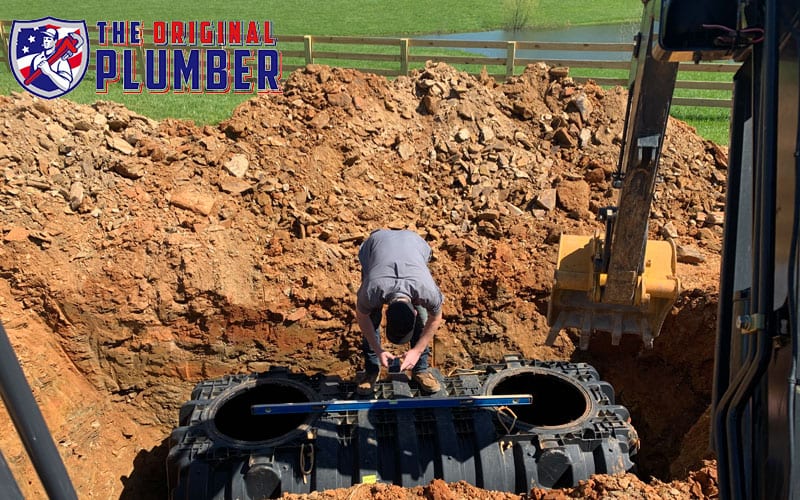Septic tanks manage your wastewater disposal just outside your property. Private wastewater management is increasingly growing in the U.S., with more than 30% of newly built homes going for on-site wastewater management.
Do you need septic tank installation and wondering what size septic tank do I need? The most vital factor to consider when installing a septic tank is the type and size of the septic tank you need. Correct sizing of your septic tank is essential to your private sewage disposal system running efficiently. This article explores some of the factors that determine septic tank sizes.
Basics of Septic Tanks
Your septic system is a self-contained compartment that is installed to hold your home’s wastewater. A septic system has two main parts; the soil absorption field or drain and the tank. When wastewater enters the septic tank, solid waste collects at the septic tank base, forming what is known as a sludge layer. Soap residue, grease, and oil produce a sum layer at the surface. The middle layer contains the effluent or wastewater. When the septic tank fills, the wastewater leaves the tank and reaches the drain field, where it is drained into the soil. To learn more how a septic tank works see our post that goes in more depth on how a septic tank works.The Main Types of Septic Tanks
Before considering septic sizes, it is vital you know the following common types of septic tanks.- Fiberglass septic tanks
- Plastic septic tanks
- Concrete septic tanks
Why Septic Tank Sizes is Important
If your home’s septic tank is too small to meet your needs, it would not be able to deal with the volume of wastewater from your house. This can generate all manner of irritating issues, such as foul odors, flooding, and blockages. Nevertheless, the most prevalent consequence of a septic tank, which is too small, is that the emerging pressure will release the water before it is efficiently purified. This implies that the solid waste in the septic tank won’t be adequately broken down and will collect faster and result in potential overflows and blockages. If your septic tank is oversize, you will also have issues. A septic tank that is too big will not run well without the proper volume of wastewater running through it. If your septic tank is too big for your house, there wouldn’t be sufficient collected liquid required to produce the bacteria, which helps break down the solid waste in the septic tank.What Determines Septic Sizes?
Here are some of the factors determining septic tank sizes; consider them so that you purchase the most suitable septic tank for your home.Consider Your Water Usage
The most reliable and effective way of determining the septic tank size suitable for your property is by calculating the amount of water you use. The septic tank size needed is dependent on the volume of water it can hold, which will be drained into the soil absorption field. In many parts of the United States, the minimum septic tank size permitted is 1,000 gallons. Based on the overall water consumption of your household, the recommended septic tank sizes are as follows.- Less than 1,240 gallons a day: a septic tank of 1,900 gallons
- Less than 900 gallons a day: a septic tank of 1,500 gallons
- Less than 700 gallons a day: a septic tank of 1,200 gallons
- Less than 500 gallons a day: a septic tank of 900 gallons
Consider the Size of Your Property
Another way to find the most suitable septic tank size for your house is by considering its square footage. The larger your home, the larger the septic tank you’re going to need. For instance, a house smaller than 1,500 square feet usually requires a 750 to 1,000-gallon tank. On the other hand, a bigger home of approximately 2,500 square feet will need a bigger tank, more than the 1,000-gallon range.The Number of Bedrooms Your Property Has
Another factor that determines the septic tank size you choose is the number of bedrooms in your house. The more bedrooms in your property, the bigger the septic tank you need. Here are the recommended septic sizes depending on the number of bedrooms.- A 1-2 bedroom house requires 750 gallons septic tank
- A 3 bedroom house requires 1000 gallons septic tank
- A 4 bedroom house requires 1200 gallons septic tank
- A 5-6 bedroom house requires 1500 gallons septic tank




